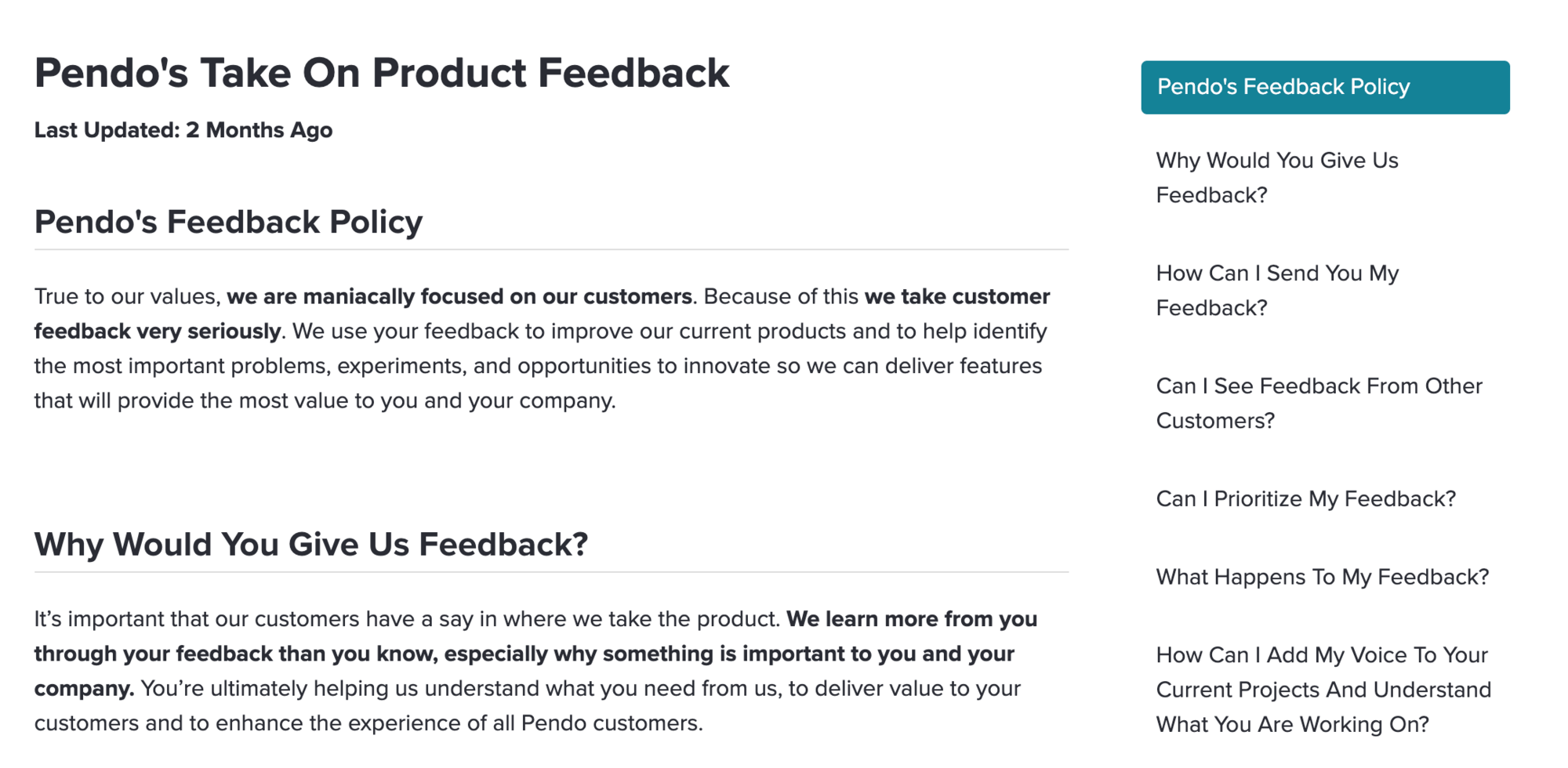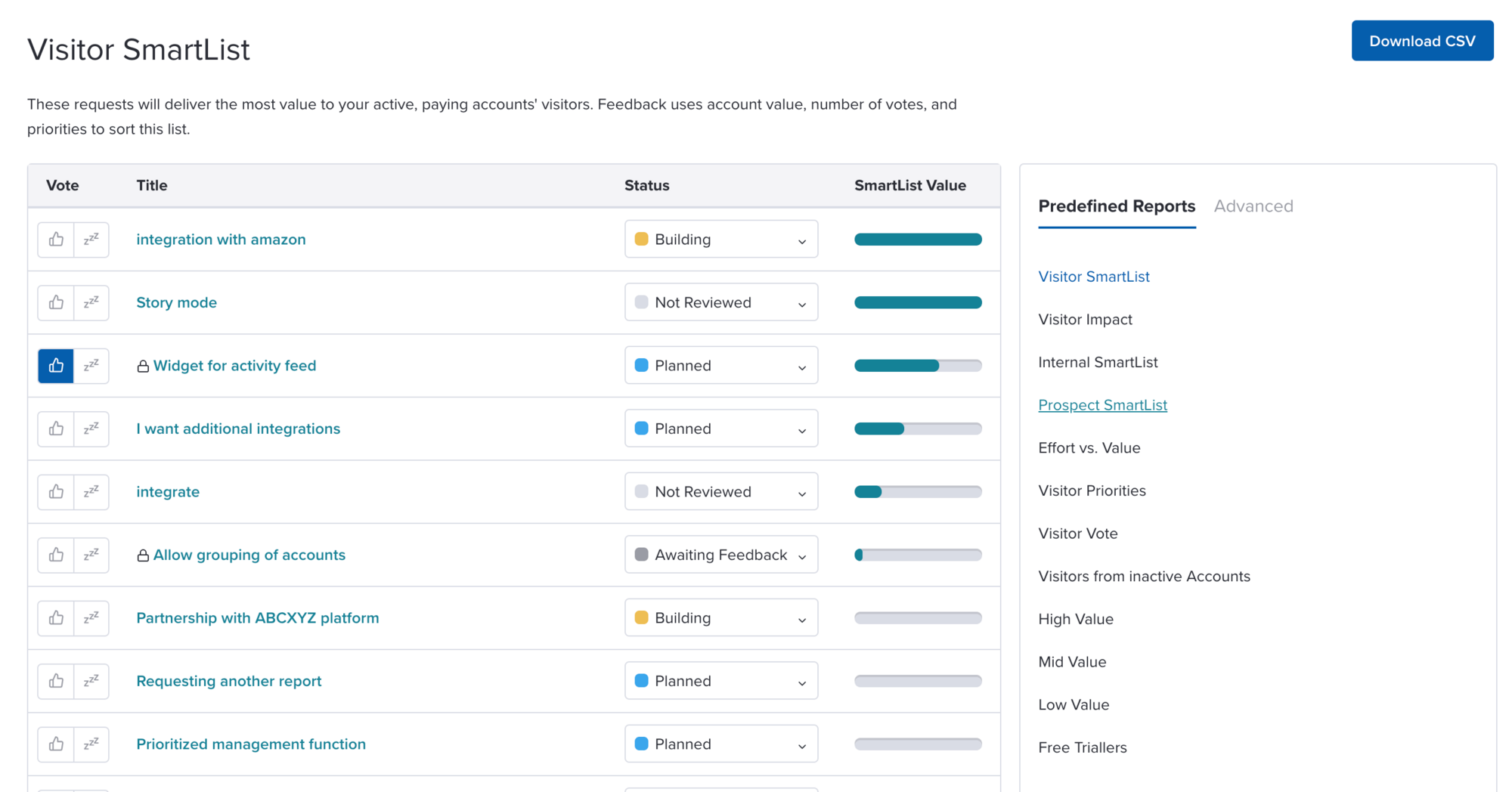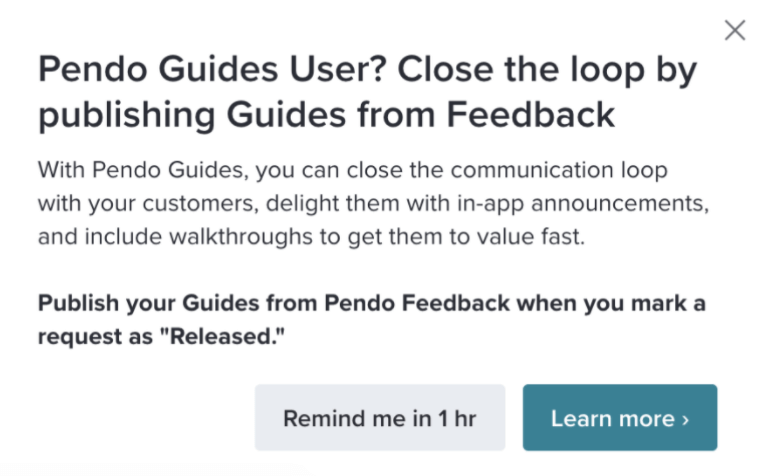Product feedback is an unbelievably valuable source of data, but many organizations struggle to effectively handle feedback at scale, or worry that creating a single feedback process will overwhelm their product teams. Instead, feedback often disappears into a black hole, creating a never-ending backlog for product teams to wrangle and a poor experience for customers.
In our recent webinar, we shared best practices and processes to prevent the black hole of feedback for your customers and your internal teams. You can watch the full webinar here, but below I share some of the key takeaways on this important topic.
Step 1: Gathering feedback at scale
As our products and businesses scale, spreadsheets, Trello boards, and dedicated email addresses no longer do the job when it comes to product feedback. If (read: when) your current process feels out of control and full of holes, it’s time to get serious about feedback and make some simple changes. Why? Two reasons:
- Capturing product feedback at scale gives you the insight you need to make better product decision that have an impact on growth; and
- Customers demand a great feedback experience–they want to help, they want to be heard, and their voice is invaluable to you.
So, where do you start?
Create a Product Feedback Policy
A Product Feedback Policy allows you to set expectations with your teams and customers about how they can submit feedback to you, what your product teams do with the data, and how you will communicate back.
This keeps your product teams in control–you set the process and decide on what terms and how often you are able to review and respond to feedback. Customers simply want to know the process–be open, welcome their voice, give them a single place to submit feedback, and be as transparent as possible to help build trust and understanding. If you want to learn more, here’s Pendo’s take on product feedback.
Share your policy in the places it makes sense for you. It could be a blog post, help article, or part of the automated response you send out when you receive a new request.
Add a little process
Once you have a clear Product Feedback Policy, you need to ensure there is a process in place to make the most of your feedback data.
Have a single, centralized place for all product feedback, regardless of whether the feedback comes from your customers, teams, or prospects. If feedback data is scattered, it creates that black hole for your product teams. Storing feedback in one place makes it easy to manage all of the requests you receive and builds trust with the product teams who can then work confidently with the information.
When it comes to reviewing requests, find out what works for your product teams. Some companies will look at feedback requests when they reach a certain level of popularity, dive into requests as they become relevant to the roadmap, or have a set cadence where product managers explore requests for their product area on a regular basis.
There is no right and wrong answer here. As long as you are clear with customers and communicate back, you will be able to create a positive experience and with that comes a lot of trust and understanding.
Step 2: Making impactful decisions with feedback data
Storing data in one place means you can actually use the data effectively too. Think of your single feedback location as an incredible library for your product teams–a place full of insight, information, and innovation ready to be explored!
At Pendo, we use our Feedback product to automatically segment all of our product feedback. Our teams use Reports to easily understand total ARR associated with feedback requests, top requests based on priority and votes, and even requests by product area with the associated product usage data.
This data is extremely powerful in decision making and wouldn’t even be accessible without a Product Feedback Policy or a solid process. We show feedback data when we make release announcements within the company, that way everyone can see the measurable impact of collecting and using product feedback at scale.
Step 3: Collecting feedback is only half the job
Remember that collecting and using feedback is only half of the job. This only works if you have a process for communicating back to you customers and teams, too. As part of centralizing feedback and working out a process to review and use the data, talk to your product team about closing the communication loop so you can lose that black hole of feedback for good.
As with so many things in life, one size does not fit all. Do what works for you as a business and make sure you involve your marketing team in the conversation. Forming a strong relationship with the marketing team makes your releases more impactful and ensures there is an ongoing dialogue around what you are working on and why.
At Pendo, we notify customers when one of their feedback requests changes status and we can now message them in-app using Guides when a new release is made. This allows our product teams to not only announce a new feature or improvement, but also build in-app onboarding to get customers to value fast.
We also have a loop of communication across the organization (this is where the close relationship between product and marketing is key). Examples you could explore include product-focused:
- Blog posts
- Customer newsletters
- Conferences and events
- ウェビナー
- Slack groups
- ソーシャルメディア
If you want to hear the full discussion on abandoning the black hole of feedback, check out the recording here:



![[object Object]](https://cdn.builder.io/api/v1/image/assets%2F6a96e08774184353b3aa88032e406411%2F39f3ccde352b460cbf348ccc952054cd?format=webp)



